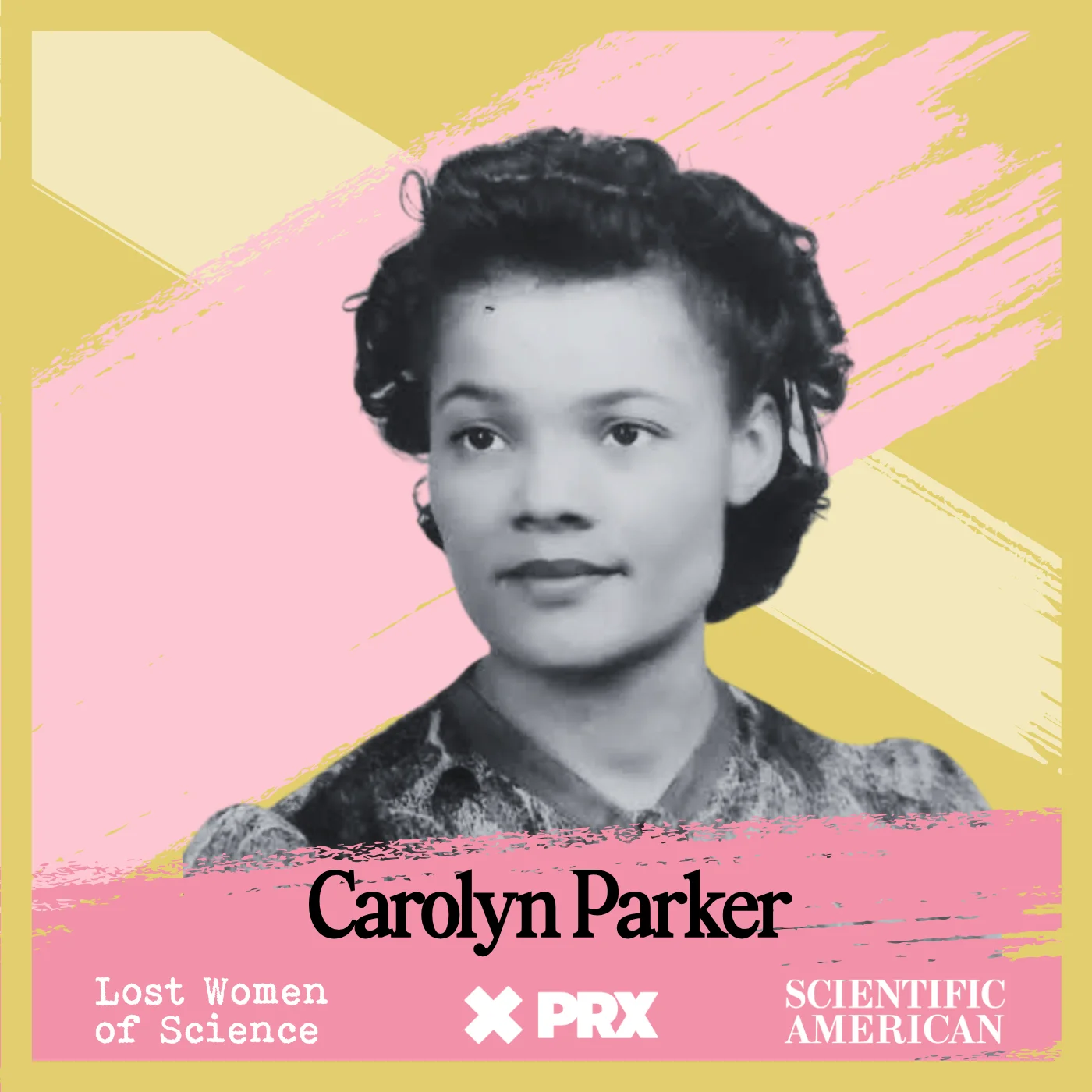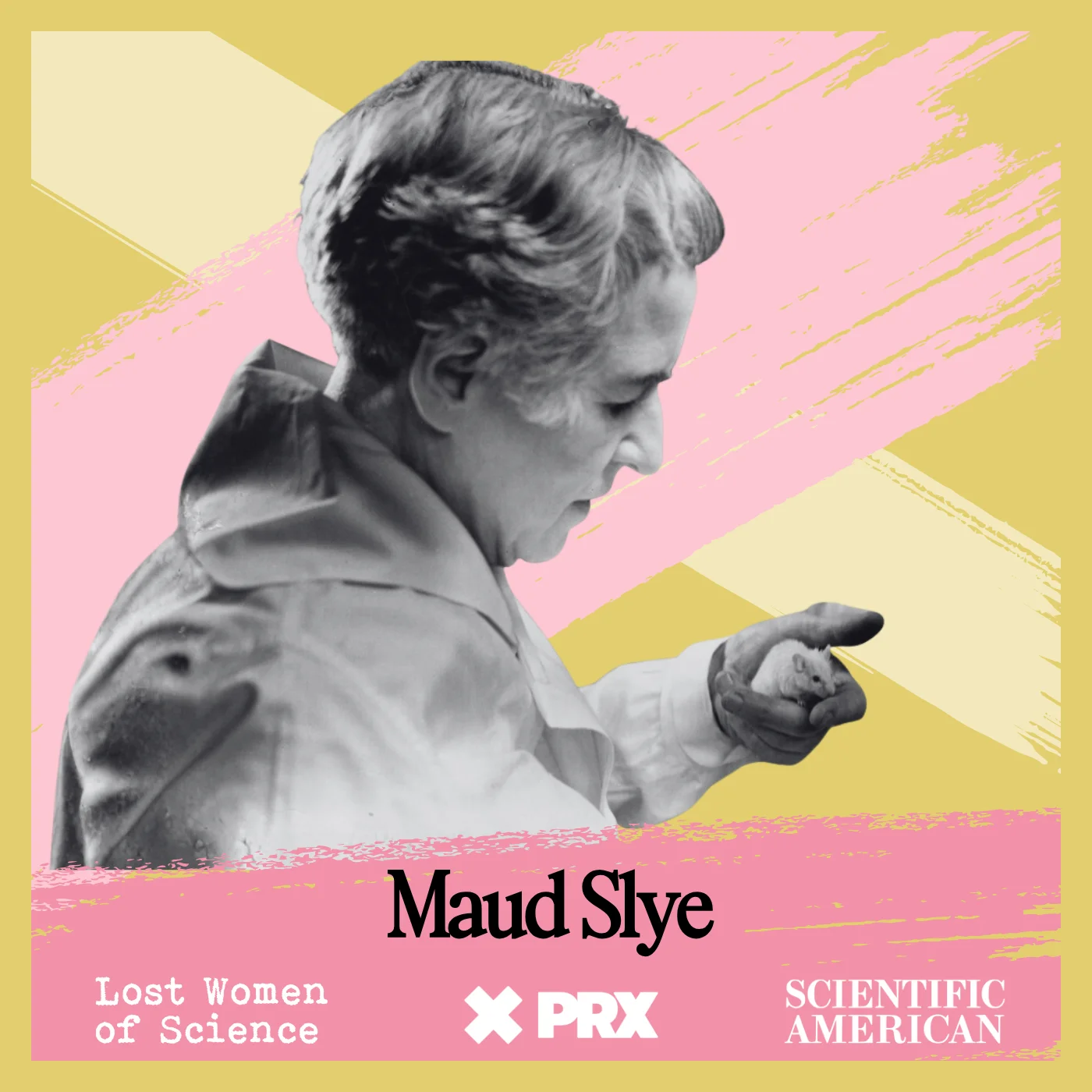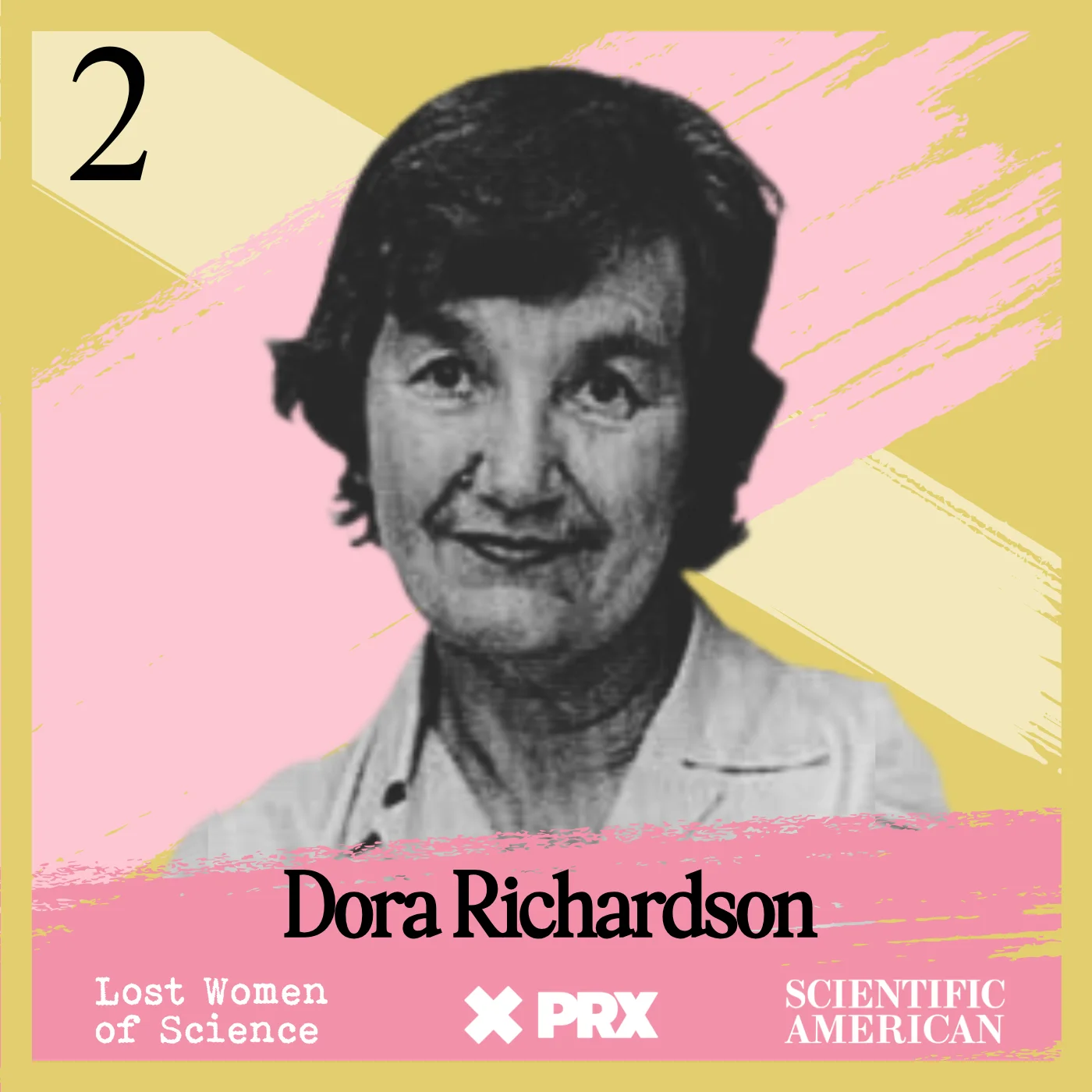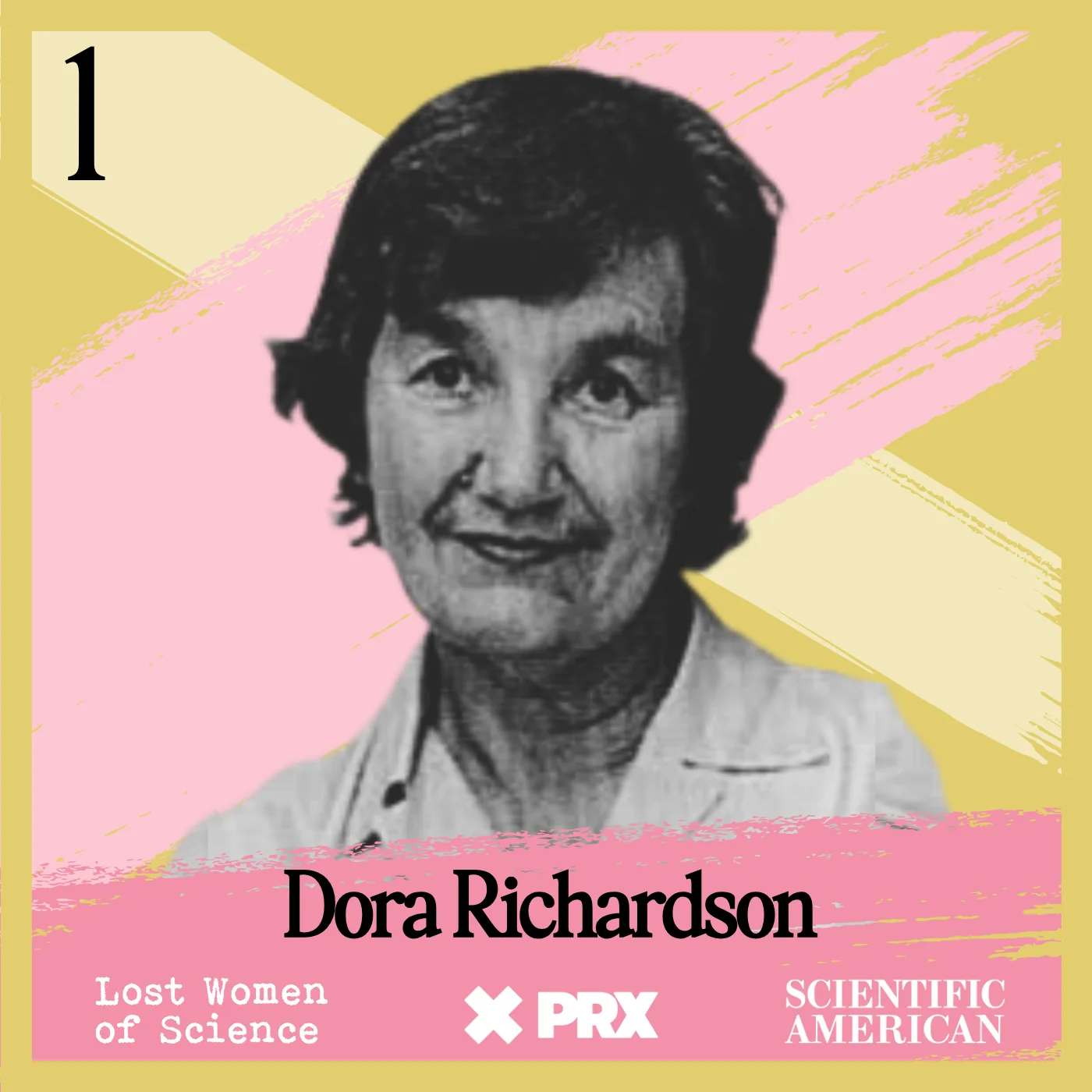
July 31, 2025
Best Of: Lost Women of the Manhattan Project - Carolyn Beatrice Parker

Episode Description
Carolyn Beatrice Parker came from a family of doctors and academics and worked during World War II as a physicist on the Dayton Project, a critical part of the Manhattan Project tasked with producing polonium. Polonium is a radioactive metal that was used in the production of early nuclear weapons.
After the war, Parker continued her research and her studies at the Massachusetts Institute of Technology, but she died of leukemia at age 48, before she was able to defend her PhD thesis. Decades later, during the height of the Black Lives Matter protests, citizens in her hometown of Gainesville, Florida voted to rename an elementary school in her honor.
This Best Of episode, which first aired in November 2024, is also available in a Spanish adaptation, narrated by Laura Gómez.


Erica is a sound designer, producer, and mix engineer for podcasts and radio. She’s contributed to shows for PRX, The Atlantic, Prologue Projects, Vox, Pushkin, Audible, LWC Studios, CNN, and TED.

Erica is a sound designer, producer, and mix engineer for podcasts and radio. She’s contributed to shows for PRX, The Atlantic, Prologue Projects, Vox, Pushkin, Audible, LWC Studios, CNN, and TED.
Carolyn Parker’s niece.


Further Reading:
Carolyn Beatrice Parker: A Life in Physics, by Ronald E. Mickens and Charmayne E. Patterson, History and Philosophy of Physics, Fall 2021.
Carolyn Beatrice Parker, by Stephen Roberson, National Society of Black Physicists, Feb 3, 2022.
Carolyn Beatrice Parker, Atomic Heritage Foundation.Polonium in the Playhouse : The Manhattan Project’s Secret Chemistry Work in Dayton, Ohio, by Linda Carrick Thomas, Trillium, an imprint of The Ohio State University Press, 2017. Follow the link to read this book on the Internet Archive.
Episode Transcript
Best Of: Lost Women of the Manhattan Project - Carolyn Beatrice Parker
NEWS TAPE: Today the Alachua County School Board will have their first public session. Now, just last month, the school district voted to change the name of the school, which was named after a confederate general…
Laura Gómez: In June 2020, during the height of the Black Lives Matter protests sweeping across the U.S., one small school in Florida was facing its own reckoning. A sort of reckoning of memory. Citizens of the city of Gainesville, many of them parents and former students, were demanding that the name of one of their local elementary schools be changed. And the school board agreed. But change the name to what?
NEWS TAPE: We've already received more than 150 suggestions from people throughout the community for new names. So when the committee that's been selected to look over the names and make a recommendation to the school board gets together, they'll have a lot of information to go through.
Laura Gómez: Many of the names submitted were Black historical figures; writers, army officers, congressmen. And… a physicist. One of Gainesville's own who had worked on the top-secret “Manhattan Project” during World War II: Carolyn Beatrice Parker.
Laura Gómez: This is Lost Women of Science. I’m Laura Gómez, and today we are bringing you the story of Carolyn Beatrice Parker. This is an adaptation of an episode that we first aired in English in 2024. It was part of our series “Lost Women of the Manhattan Project,” about the important female scientists who worked with Robert Oppenheimer during World War II.
Carolyn Edwards: She was my aunt. She was my aunt Carolyn. Notice that my name is Carolyn. I was named after her, so I have a kind of special connection in some ways.
Laura Gómez: This is Carolyn Parker's niece, Leslie Carolyn Edwards.
Carolyn Edwards: She was a person who my mother just held in really high esteem. Carolyn was my mother's oldest sister. She was so, so much enamored with my aunt that she named me — I was my mother's first child — that she named me Carolyn.
Laura Gómez: Carolyn Parker, eldest of seven children, was born in Gainesville in 1917, to a family of doctors and academics. And her family was exceptional.
Carolyn Edwards: Remember this is the 1930s and 40s, you know, just coming out of the Depression, still very much in the Jim Crow era. Being a doctor and an African American doctor at that time is not the same as it is today.
Laura Gómez: Carolyn Parker's father was Julius A. Parker, a physician who graduated from Meharry Medical College, the first medical school in the South for African Americans.
Carolyn Edwards: He practiced from his home. It's a small town, but it's in a rural area, and all of the Black people would come to this one doctor, who at the time was my grandfather, and sometimes they would, you know, pay him with a bunch of greens or some peanuts or something, so he was not rich. But you know, he was able to take care of his family. He instilled the importance of education.
Laura Gómez: Carolyn Parker went to Fisk University and graduated with a B.A. in Physics, then went on to earn an M. S. in physics specializing in spectroscopy from the University of Michigan in 1941. In 1942, Carolyn began teaching physics and mathematics at Bluefield State College in Bluefield, West Virginia. But she didn’t stay there long.
In 1943, Carolyn Parker was recruited from her teaching position to begin work on the Dayton Project.
The Dayton Project was an important part of the "Manhattan Project," run by the Monsanto Chemical Company in Dayton, Ohio. And it was top secret. All the Dayton recruits had to sign the Espionage Act, which made it a crime to share information about their work. According to one of Carolyn Parker's sisters, Parker's work was “so secret she couldn't discuss it, even with us, her family.”
This makes it hard to determine exactly what Carolyn was doing at the project site. But we know that she was hired as a research physicist. And her listings in the tabulations indicate she was a “scientist” and not considered a “technician” or “laborer.”
The aim of the Dayton project was to produce polonium.
George Mahfouz: Polonium is a radioactive alpha-emitter, radioactive material. It’s a metal.
Laura Gómez: This is George Mahfouz, a chemical engineer who worked on the Dayton Project. He passed away in 2015. What you’re hearing is a 2005 interview with him from the Atomic Heritage Foundation’s “Voices of the Manhattan Project” series.
George Mahfouz: When polonium is in contact with beryllium, neutrons by the bazillions are the result of this interaction between the polonium and the beryllium. You need all the neutrons because if you don’t have any neutrons, there’s no bomb. It’s the trigger for the bomb, actually, in simple English.
Laura Gómez: By 1943, “Manhattan Project” scientists were beginning to establish the need for polonium as a trigger for the atomic bomb. But polonium was a difficult element to study.
George Mahfouz: Because at that point in time, the amount of polonium available in the world was next to nothing. There was no material, no knowledge of its chemical, physical, or any other properties.
Laura Gómez: And it’s almost entirely processed material–the small amount that exists in nature has to be extracted.
George Mahfouz: You have to process tons to get practically no material out of it–I mean less than a milligram. And you need more than that to make lots of initiators. So you have to get a lot of it made.
Laura Gómez: So the team at Dayton was working against the clock developing and improving a complicated process to extract polonium.
George Mahfouz: The way they get polonium, or had gotten polonium then, they took bismuth, encased, of course, in aluminum, because bismuth is very friable. It fractures, just looking at it practically, and then that bismuth slug is irradiated with neutrons, again, in a reactor. The bismuth is then converted, byproduct of that is polonium-210, a very small fraction.
That whole process, by the way, was developed in Dayton by Monsanto. Now, this all took place in a very short time. We need to keep one thing in mind: nothing started until ’43, relatively early in ’43. The bomb went off in ’45. I mean, that’s a miracle, for that kind of result when nothing was known of how to make a bomb work.
Laura Gómez: After the war ended, Carolyn Parker spent a couple more years in Dayton, winding down her work as a research physicist. In 1947, she left to teach as an assistant professor at Fisk, and in 1951, she decided to pursue higher degree status. She was accepted to the physics graduate program at MIT, though without financial support.
While she was living in Boston, she often sent letters and gifts to her family — sometimes toys to her younger siblings, and written materials related to rockets, aviation, and science.
In 1953, Carolyn earned her second master’s degree in physics from MIT. And she began working on a Ph.D., but by the mid 1950s, Carolyn started to get sick.
George Mahfouz: Now, you can decontaminate some things by just plain soap and water. If that doesn’t do it, you then go to Clorox. If that doesn’t do it, the procedure then that we had was, you go to dilute hydrochloric acid.
Laura Gómez: As George Mahfouz recalls, there were some pretty thorough health and safety precautions in place at Dayton, including frequent urinalysis and hand washing every time you left the area.
George Mahfouz: You couldn’t leave Unit 4 and go home unless your hands were zero.
Laura Gómez: But it was difficult to work with polonium and avoid getting the material in your system.
One Dayton Project director, W.C. Fernelius, shares a story in a 1983 article about an employee at Unit 4. He says, “When she did her hair, she would put the bobby pins in her mouth. She had the highest urine count in the place.” Though it’s impossible to say for certain, later references say that this story is very likely about Carolyn.
And the building that housed Unit 4, where Carolyn worked, was so contaminated that at the end of the war it was destroyed.
Carolyn Edwards: Part of her story was that she had an illness and died before she could complete her dissertation.
Laura Gómez: Carolyn Parker became sick with leukemia, very likely due to her polonium exposure. According to Carolyn's family, she was nearing completion of the coursework for her Ph.D. in physics at MIT, but financial setbacks and the onset of leukemia prevented her from defending her dissertation. She died in her hometown of Gainesville on March 17th, 1966, at 48 years old.
Carolyn Edwards: I did always feel like I should become a doctor, and I did. But it was a Ph.D. And that was inspired by my aunt.
Laura Gómez: Carolyn Edwards became a Doctor of Philosophy.
Carolyn Edwards: So I made a point of making sure that I would complete my dissertation and become Dr. Edwards. That was something… it wasn't like it was pressure, but it was an objective and something that I took that I should do to honor my aunt and the rest of the family.
Laura Gómez: These connections we have to our namesakes run deep. In Alachua County, in 2020, a committee of volunteers came together to try to reckon with this same question. What name do we give this institution? Whose legacy do we want our children to carry?
COMMITTEE TAPE: All right, so Hal, you were helping us, um, last meeting with keeping track of the names that we need to go through.
Laura Gómez: This is a recording of one of the Zoom meetings that this committee of volunteers had, in which they laid out many of the names that the community had sent, discussed the names, and eventually voted.
COMMITTEE TAPE: Hal? Hal sorry you're muted.
Laura Gómez: These meetings are long, virtual, and often a little bit confusing.
COMMITTEE TAPE: And will you send all the choices as well? Yes, I can do that too. And don't put it in that, awfully long link.
Laura Gómez: But everyone there is really committed to hearing about all of these people. And to choosing the right name. Eventually everyone on the call decides that they're going to vote on who they want to rename the elementary school after.
COMMITTEE TAPE: So, um, I know I did a tally and I know a few other people have submitted, but it looks as though, um, Carolyn Parker, uh, met the expectations of the rank choice voting. Does anyone want to speak to this? Do we have agreement?
Laura Gómez: On August 18, 2020, J. J. Finley Elementary School changed its name to Carolyn Beatrice Parker Elementary School.
Her niece, Carolyn Edwards, lived in the northeast for a time but moved back to Gainesville a few years ago. She is nothing short of a local celebrity at the elementary school.
Carolyn Edwards: I went to the school and did an interpretation of my aunt as my aunt. I mean, I dressed up like she might have dressed in the 1940s and 50s and took on her persona and talked to several different groups of children as Carolyn Parker and, you know, answered their questions and told them about my life as Carolyn Parker. And then, very dramatically for the kids, you know, I had a wig on because my hair is not the same style — I took it off and then became Carolyn and talked to them and were thrilled.
Carolyn Edwards: That was the highlight, taking off the wig that I had on. But, but yeah, so I've been to the school and they've invited me to events and they treat me like royalty when I go there. I mean, they say, “This is Carolyn. She's the niece of Carolyn Parker.” And they all clap and I get embarrassed and it's, you know, it's really sweet.
Laura Gómez: Here in Alachua County, people made a choice, almost 80 years after the completion of the “Dayton Project,” to speak Carolyn Parker’s name aloud, to write it large on the walls of their institutions, to plant it in the minds of their children.
Laura Gómez: This episode of Lost Women of Science was originally produced in English by Erica Huang.
It was adapted by Samia Bouzid and translated by me. David De Luca adapted the sound design. Our associate producer was Natalia Sánchez Loayza, and our senior managing producer was Deborah Unger.
Our co-executive producers are Amy Scharf and Katie Hafner. Our program manager is Eowyn Burtner.
The original episode in English was hosted by Erica Huang, who was also the sound designer. Our fact-checking was done by Lexi Atiya, and Lizzy Younan composed all of our music.
Lost Women of Science is funded in part by the Alfred P. Sloan Foundation and the Anne Wojcicki Foundation. We're distributed by PRX.
You can find more information and a transcript of this episode at lostwomenofscience.org. I’m your host, Laura Gómez. Thanks for listening.
Listen to the Next Episode in this Series
More Episodes
Listen to the complete collection of episodes in this series.














